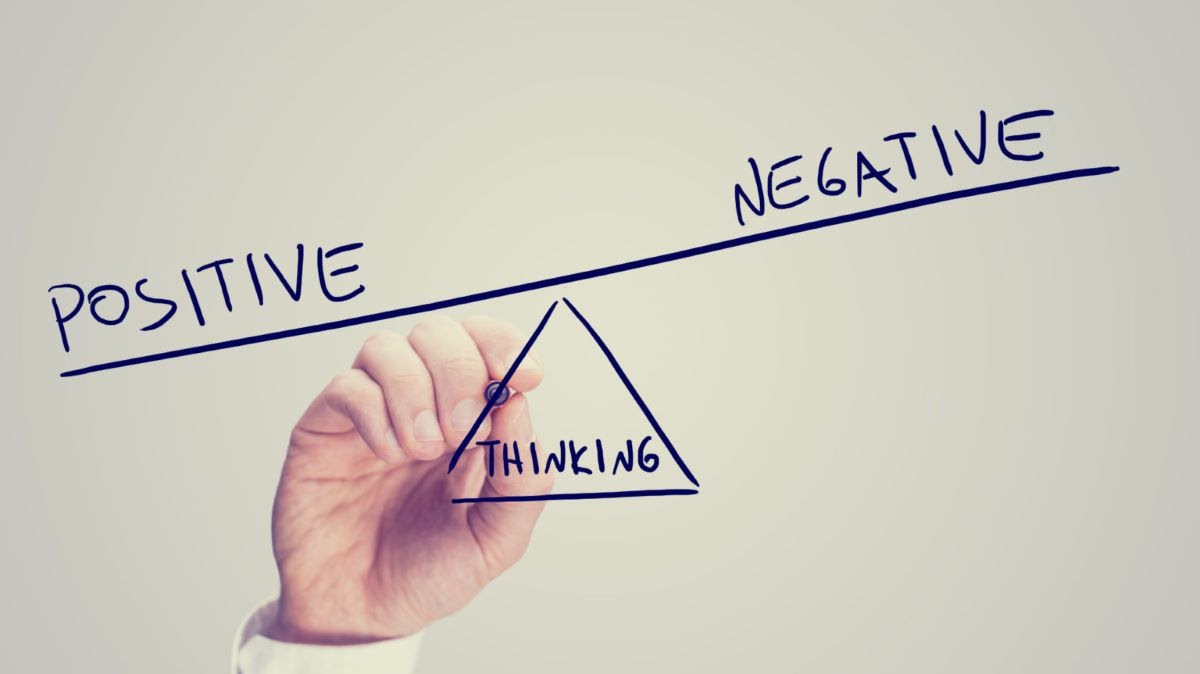Our mindset affects almost all of our decisions. It dictates how we feel and how we respond to the many stressors in our daily lives. Cultivating a positive mindset can boost your mood as well as your overall well-being. Someone with a positive mindset focuses on the good of a given situation. They do not ignore or make light of their and other people’s problems, but they approach them with the expectation that they can go well.
This positively impacts your health as your body is given more time to relax. Changing your mindset is challenging. It is creating a new habit and breaking an old one in the process.
A Positive Outlook

One big step towards a positive mindset is a positive outlook. It is easy to fall into the habit of thinking and expecting the worst even when those thoughts are not justified.
These small changes towards a positive outlook help in everyday life, just as a positive mindset does.
Think Optimistically
Take a moment to think about an upcoming event turning out better than expected. It can be a big event or a small, everyday one. Imagining positive scenarios can lead to an overall boost in mood and well-being.
Practice Self-Care and Self-Compassion
An important step in cultivating a positive mindset is admitting that you are worth taking care of. Take some breaks to rest and recharge. When you take a break or splurge on a purchase, remind yourself that you deserve it.
Our self-talk often reminds us of everything we are doing wrong while forgetting about what we are doing right. Congratulate yourself on your recent accomplishments, no matter how small they seem. Cultivating self-compassion and changing the focus of your self-talk from negative to positive is a huge step in creating a positive mindset.
Focus on your Strengths
Think about what you are good at. Nothing is too small to be written down. Make a list of your strengths and positive qualities.
It is easy to ignore your strengths and focus on your weaknesses. We often exaggerate the bad and downplay the good. Keep that in mind when using these tips. The foundation of a positive mindset is the shift towards focusing on all the good that is going on.
Setting Meaningful (and Achievable) Goals

From to-do lists to mental notes to projects and work there are always tasks for us to do. It is not unusual to feel anxious and overwhelmed about work and goals. Here are some tips to manage that stress:
Balance Work Time and Break Time
There are so many distractions built into our workstations: social media, smartphones, and web browsing, to name a few. Getting lost in those can be a huge time sink, making work take longer and generally increasing the stress associated with each assignment.
Separate time for productivity, trying to keep distractions at bay. This will help keep you productive and feel better after seeing the progress you have made. Remember to set aside time for breaks as well.
Step-by-Step Process
Looking at a project as one big task is daunting. Try breaking it up into bite-sized pieces that can be completed in one work session.
Allow yourself to feel accomplished for finishing each step of the project. Setting milestone goals is a great way to foster a positive mindset as you take note of your accomplishments.
Positive Versus Negative Thinking

The way we react to everyday events has a huge impact on our overall mental state. Many of these reactions occur through our own “self-talk,” which are all the conscious thoughts you have through the day. These thoughts react constantly to the world around you.
The way you think is based on the general emotion of your self-talk thoughts. Thoughts that tend to expect the worst and are pessimistic are examples of negative thinking.
Thoughts that tend to expect the best and are optimistic are examples of positive thinking. Most people lie somewhere between the two, thinking positively sometimes and negatively other times. It is easy to fall into the trap of negative thinking. Identifying negative thinking and shifting focus to positive thinking are two ways to help avoid the trap.
Identifying Negative Thinking
Negative thinking often arises in these common forms:
- Focusing on the negative sides of a situation while “filtering” out the positive ones affects you both in the moment and at the end of the day. It makes days seem worse than they actually are. A common effect of this is how we put so much more emphasis on insults or criticism than we do compliments.
- Blaming yourself whenever something goes wrong is referred to as personalizing. The danger is when you blame yourself even if what happened had nothing to do with you.
- Blowing events out of proportion is often referred to as magnification. Getting the wrong coffee order, waking up late, or stubbing your toe are common mishaps, but if you say “my day is ruined!” or something along those lines, they begin to affect you more and more.
- Seeing things as only good or bad is often referred to as polarizing. An example of this is if you see yourself as either a total success or a complete failure.
It is important to identify negative thinking, as it happens a lot without you even realizing it. These forms often mix together, making it harder and harder to maintain or reach for a positive mindset.
Shifting Focus to Positive Thinking
Changing your mindset from thinking negatively to thinking positively takes dedicated time and effort. It is a similar process to creating a new habit and breaking an old habit along with it. This is a challenge, and to help conquer it here are some ways to think and behave in a more positive manner:
- Identifying areas to change. What do your negative thoughts usually center around? Focusing on one area at a time is a great way to tackle a negative mindset.
- Check up on yourself. Take time throughout the day to evaluate your current mindset. Try to put a positive spin on any negative thoughts you are having.
- Be open to humor. Allow yourself to smile and laugh when the occasion arises. Small moments can have a big impact on your overall mood.
- Follow a healthy lifestyle. It is easy to remain in the same room all day. Getting up and exercising about 30 minutes during the week can positively affect your mood and reduce stress.
Over time, you can change your mindset from thinking negatively to thinking positively. Your self-talk will focus less on criticism and the worst parts of the day, instead of appreciating the best parts.
Positive thinking is a huge step when cultivating a positive mindset.
How Will These Tips Help You?
These are general tips to help you cultivate a positive mindset, but specifically, everyone will benefit from them differently. If one of these tips does not work for you, try out another one and see how it affects you. Keep at it. These changes will take time, but they are well worth the effort.
